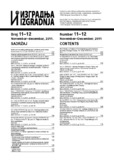Housing strategies in Kenyan towns and dweller-initiated transformations-Case estates from Nairobi
Abstract
Housing demand in Nairobi city has exceeded her rapid population growth culminating in
shortage, contributory to informal settlements, and now increasingly attributed to dweller-initiated
transformation in formal housing. Although additive transformations, manifest as extensions,
are responsible for needed additional housing stock, the paper appends the supporting view
that qualitative value-addition fulfilling socio-economic needs are also central to the dwellers’
objectives. In first part, the paper traces the historical evolution and the structure of the city’s
housing strategies. Favoured by her British colonial heritage, these strategies were concurrent
with the modernist paradigm and operationalised as ‘provider’ housing template. The independent
state policies hardly deviated from the same premise. This however contradicted participative
strategies of the ‘supporter’ paradigm. The paper posits that the absence of dwellerparticipation
lends these projects to unilateral transformations prevailing in formal housing in
Nairobi. Using two case study projects at Buru-Buru and Kaloleni, the magnitude and nature
of the transformations are related. The findings draw a link to the housing consumption model of
ownership or rental, as well as the physical design strategy of the estate, clusters grouping entity
and dwelling unit. Further, the common negative view of transformations is dispelled in recognition
of the conscious enhancement of spatial quality in the transformed estates that promotes
the conviviality of the neighbourhoods. The only noted negative quality of transformations is
use of transient technology and materials which however is directly related to the lack of tenure
and other rights to the locations. These lead to the conclusions that the ingredients of strategy
guiding positive outcomes from transformations include an increased sense of security of tenure
and appropriate physical strategies for inevitable transformations by designers.
Citation
IZGRADNJA 65 (2011) 11–12, 651–670Subject
Dweller-initiated transformationsHousing estates
Urban housing strategies
Kenya
Nairobi
Participation.

